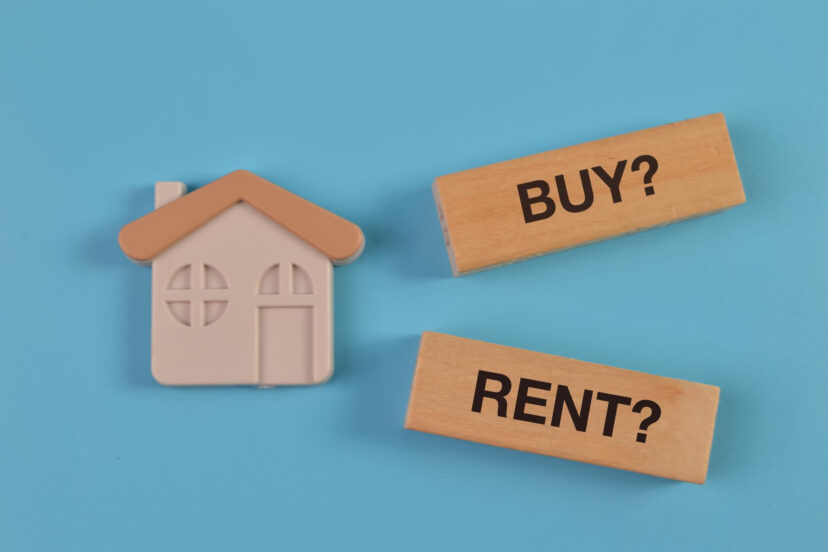Rent-to-Own vs. Traditional Buying
The path to homeownership in the United States offers various options, each with its own set of advantages and disadvantages. Two of the most commonly considered methods are traditional buying and rent-to-own agreements. Both avenues have their merits, and which one is the better choice depends on individual circumstances and preferences. In this article, we will conduct a comparative analysis of the pros and cons of rent-to-own versus traditional home buying.
Traditional Buying
Pros of Traditional Buying:
- Immediate Ownership: One of the most apparent benefits of traditional buying is that you immediately become the owner of the property once the sale is complete. You gain full control over the property, which means you can make any desired modifications, renovations, or improvements.
- Building Equity: With traditional buying, your monthly mortgage payments contribute to building equity in the property. Over time, this equity can serve as an investment, increasing your net worth.
- Fixed Monthly Costs: In a fixed-rate mortgage, your monthly mortgage payment remains consistent throughout the loan term, providing stability and predictability in your housing expenses.
- Tax Benefits: Homeowners often benefit from various tax deductions, including mortgage interest, property taxes, and certain home-related expenses. These deductions can reduce your overall tax liability.
- Freedom to Sell or Rent: As the owner, you have the freedom to sell the property whenever you desire or rent it out for additional income.
Cons of Traditional Buying:
- High Upfront Costs: Traditional buying typically requires a substantial upfront payment in the form of a down payment, closing costs, and other associated expenses.
- Rigid Financial Requirements: Mortgage lenders often impose strict credit and income requirements, making it challenging for some individuals to qualify for a mortgage.
- Long-Term Commitment: Traditional mortgages typically come with long-term commitments, often 15 to 30 years. This extended commitment can limit flexibility and restrict other financial goals.
- Market Risk: Homeowners are subject to market fluctuations, which can impact property values. In a declining market, you may experience a loss in property value, potentially leading to negative equity.
Rent-to-Own
Pros of Rent-to-Own:
- Lower Upfront Costs: One of the primary benefits of rent-to-own is the lower upfront costs. Instead of a substantial down payment, you pay an option fee, which is generally more affordable.
- Time to Build Credit: Rent-to-own agreements provide individuals with the opportunity to improve their creditworthiness during the lease period, making them more attractive candidates for traditional mortgage lenders in the future.
- Flexibility: Rent-to-own offers flexibility. If your circumstances change during the lease period, you have the option not to purchase the property. This flexibility can be reassuring if you’re uncertain about your long-term plans.
- Potential Appreciation: In a rent-to-own agreement, the purchase price is typically fixed at the beginning. If the local real estate market appreciates during your lease period, you could end up buying the property for less than its current market value.
- Test Drive the Property: Living in the property before making a long-term commitment can help you determine if it’s the right fit for your lifestyle.
Cons of Rent-to-Own:
- Non-Refundable Option Fee: The option fee is typically non-refundable. If you decide not to buy the property at the end of the lease, you won’t get this money back.
- Higher Monthly Payments: Rent-to-own agreements often come with higher monthly rent payments compared to traditional rentals. A portion of this increased payment goes toward rent credits.
- Maintenance and Repairs: Depending on the lease agreement, you may be responsible for maintaining and repairing the property, which can be a significant financial and time commitment.
- Risk of Property Depreciation: Rent-to-own properties can expose renters to the risk of property depreciation. If the local real estate market experiences a decline in property values, you could end up purchasing the home for more than its current market worth.
- Legal Complexities: Rent-to-own agreements can involve intricate legal issues. It’s advisable to consult with a real estate attorney who can review and explain the terms of the lease agreement.
- Limited Inventory: Not all properties are available as rent-to-own options. You might have a more limited selection of homes to choose from compared to the broader market of homes for sale.
Which Option Is Right for You?
Choosing between traditional buying and rent-to-own is not a one-size-fits-all decision. It depends on your unique financial situation, long-term goals, and personal preferences. Here are some factors to consider when making your decision:
1. Financial Readiness:
If you have the financial resources for a down payment, closing costs, and monthly mortgage payments, and you meet the credit and income requirements, traditional buying may be the more straightforward choice.
2. Creditworthiness:
If your credit score is not yet ideal for traditional mortgage approval, rent-to-own agreements can help you build better credit, preparing you for future homeownership.
3. Flexibility:
Consider your long-term plans and how they align with homeownership. If you’re uncertain about your future in a particular location, rent-to-own’s flexibility may be attractive.
4. Budget and Stability:
Analyze your budget and overall financial stability. Make sure you can comfortably afford the associated costs, whether it’s a monthly mortgage payment or higher rent payments in a rent-to-own arrangement.
5. Market Conditions:
Examine the local real estate market and economic conditions. Consider how market trends may affect the potential appreciation or depreciation of the property.
6. Legal Expertise:
Given the complexities of real estate contracts, seeking legal advice is advisable. Real estate attorneys can ensure you fully understand the terms of any agreement, whether it’s traditional buying or rent-to-own.
Conclusion
Traditional buying and rent-to-own offer distinct paths to homeownership, each with its own set of advantages and disadvantages. When choosing between the two, it’s essential to consider your financial readiness, creditworthiness, flexibility, budget, local market conditions, and legal expertise. Understanding the pros and cons of each method will empower you to make an informed decision that aligns with your individual circumstances and long-term homeownership goals. Ultimately, the choice between rent-to-own and traditional buying should be driven by your specific needs and aspirations for the future.





Comments are closed.